Description
ISO 14001 Documentation toolkit is a comprehensive series of documents that have been provided in Microsoft Word and Microsoft Excel format and includes the management policy sample, process information, procedures, instructions, audit checklist, and templates that enable you to establish and implement an environmental management system in the organizations.
| ISO 14001 Documentation Toolkit | |||
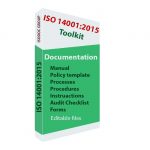 |
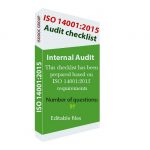 |
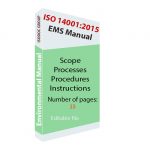 |
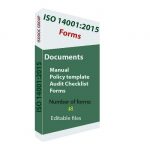 |
What’s the ISO 14001?
ISO 14001 is an internationally recognized standard that defines the requirements for the development and enhancement of an Environmental Management System (EMS). It offers a comprehensive and structured framework designed to support organizations in systematically improving their environmental performance through the identification, assessment, and management of environmental impact factors.

Which organizations need ISO 14001 certification?
Organizations whose processes or products exert an influence on the environment can derive significant benefits from ISO 14001. By adopting this standard, they can systematically manage and enhance their environmental performance through the precise identification and mitigation of environmental pollutants, thereby fostering sustainable and responsible operations.
The importance of the environmental management system
Today, the emissions from certain industrial plants and manufacturing entities, including smoke, industrial effluents, greenhouse gases, chemicals, non-renewable resources, and waste, exert detrimental effects on various environmental aspects such as water, soil, and air. This underscores the critical need for the implementation of an environmental management system (EMS) to identify, manage, and mitigate adverse environmental impacts.
Five key benefits of ISO 14001
- Complying with legal requirements.
- Reduce the adverse effects on the environment.
- Reduce environmental costs.
- Increasing the brand’s popularity in the community.
- Creating Competitive Advantage.
ISO 14001 documentation is suitable for which types of organizations?
ISO 14001 documentation is appropriate for organizations that have decided to establish and implement the environmental management system at the lowest cost and in the fastest possible time.
Owing to the time-intensive nature of the process of ISO 14001 documentation and the organizations’ decision to quickly establish and implement the environmental management system, preparing a comprehensive and reliable package of environmental documentation including all ISO 14001 procedures, prepared templates, audit checklists, instructions, indicators, and Performance acceptance criteria is highly prioritized.
ISO 14001 implementation steps
The implementation and establishment of an environmental management system may vary depending on the organization, the nature of the processes, and the approach of the ISO 14001 consultant, though in general, the establishment of ISO 14001 consists of several regular the following steps:
Gap Analysis:
Conduct a gap analysis to assess the difference between the current environmental management practices of the organization and the requirements of the ISO 14001 standard, as well as any relevant legal regulations.
System Design:
This phase includes determining the organization’s environmental policy, setting goals and objectives, understanding the organizational context, and identifying relevant stakeholders.
Management Commitment:
Management must demonstrate commitment by allocating necessary resources, defining roles and responsibilities, and ensuring the integration of environmental considerations into the organization’s operations.
Planning and Establishing the System:
This step includes documentation of ISO 14001, training, identification of relevant environmental laws and regulations, determination of performance indicators, setting acceptance criteria for performance indicators, and measuring environmental impacts. It also involves identifying and assessing environmental risks and opportunities, developing operational controls, and conducting emergency response plans.
Monitoring, Measurement, and Improvement:
This stage involves the evaluation of environmental performance, ensuring compliance with legal and regulatory requirements, conducting internal audits of the EMS, performing management reviews, and promoting continuous improvement.
Continuous Improvement:
ISO 14001 requires the implementation of corrective actions and a commitment to continuous environmental performance improvement, ensuring the EMS evolves and adapts over time.
|
|
Download sample procedure |


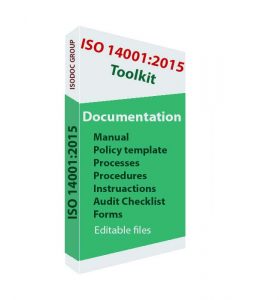
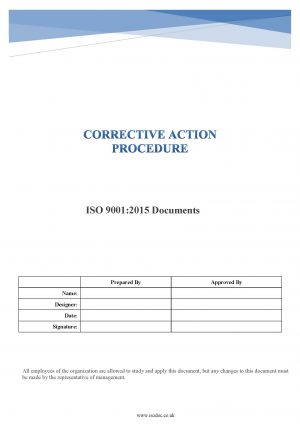
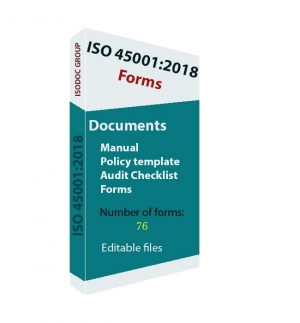
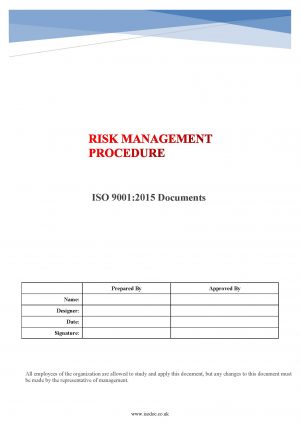
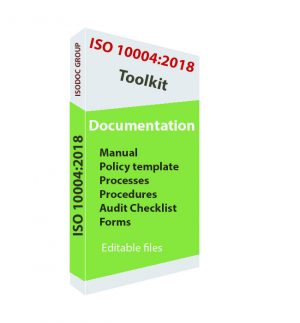
Angela stokes –
This toolkit was were helpful